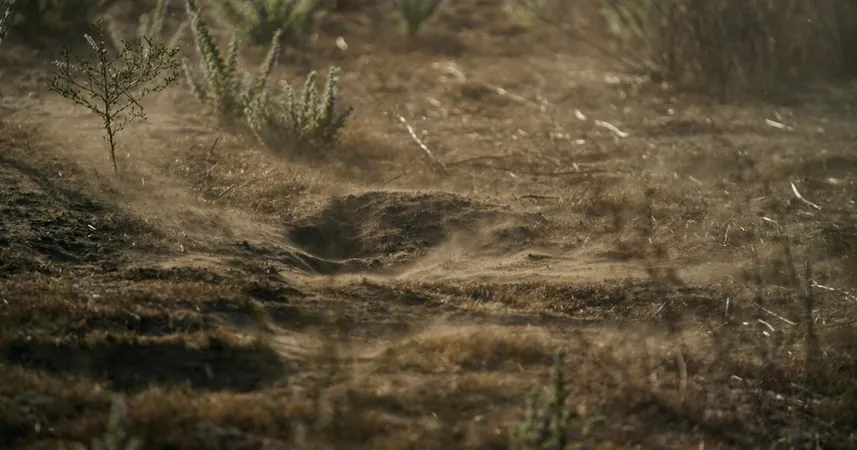
Shocking Discovery: Why Rubbing Creates Static Electricity Revealed by Scientists!
2024-10-02
Groundbreaking Discovery
Scientists at Northwestern University have made a groundbreaking discovery regarding a common yet perplexing phenomenon: static electricity. From the simple act of walking across a carpet in your socks to the classic balloon trick that stands your hair on end, researchers say they’ve unlocked the mystery of why rubbing certain surfaces can generate static electricity.
Historical Context
For centuries, static electricity has intrigued humanity. The ancient Greek philosopher Thales of Miletus, back in 600 B.C., was one of the first to observe this phenomenon, noting that fur attracted dust after being rubbed with amber. Fast-forward a couple of millennia, and we find that static electricity plays critical roles in the animal kingdom; for instance, ticks utilize static charges to latch onto their hosts from a distance. Despite its common occurrence, the science behind why rubbing creates static electricity remained largely unsolved until recent insights from Northwestern's talented researchers.
The Research Team
Lead researcher Laurence Marks, Professor Emeritus of Materials Science and Engineering, expressed his excitement over this finding, stating, 'For the first time, we can explain a mystery that baffled scientists for ages: why the act of rubbing is significant.' Until now, many theories were based on unwarranted assumptions, but Marks and his team provide a surprisingly straightforward explanation.
Classic Examples
Most people are familiar with the classic balloon trick, where rubbing a balloon on your hair results in an electrifying spectacle. This occurs because rubbing two objects with markedly different physical properties causes a transfer of electrons; one object loses electrons and becomes positively charged, while the other gains electrons and becomes negatively charged. This leads to attraction and a visible static charge. Interestingly, static electricity can also arise from rubbing materials of the same type, contradicting earlier beliefs that this only happened with dissimilar objects.
New Mechanism Uncovered
In their recent study published in the journal Nano Letters, Marks’ team presents a significant mechanism behind static charge generation. In 2019, they revealed that rubbing materials together generates tiny deformations on their surfaces, which can produce voltage. Now, they further detail how this process works, particularly through the concept of elastic shear. This property reflects a material’s ability to resist sliding when in motion; for example, when wearing socks on a smooth floor, one eventually stops sliding. The researchers propose that this increased friction during rubbing leads to unequal deformations across the material, generating opposing charges similar to how differing air pressure on a plane's wings culminates in lift.
Implications of the Findings
Marks elaborated on their initial findings, noting, 'Our initial study was merely a seed that required time to germinate. Now, we’ve cultivated it into a robust model that accurately predicts electrical current across diverse scenarios.'
Conclusion
While further validation from the scientific community is necessary, Marks’ hypothesis promises to enhance our understanding of various static electricity scenarios. Admittedly, it may not account for every specific instance, but it highlights the vast universe of mysteries still to unravel in science. With each discovery, we move closer to comprehending the ordinary wonders that shape our everyday experiences—reminding us that there's always more to learn amidst the mundane.
Stay Tuned!
Stay tuned for more electrifying discoveries in the field of science!



 Brasil (PT)
Brasil (PT)
 Canada (EN)
Canada (EN)
 Chile (ES)
Chile (ES)
 España (ES)
España (ES)
 France (FR)
France (FR)
 Hong Kong (EN)
Hong Kong (EN)
 Italia (IT)
Italia (IT)
 日本 (JA)
日本 (JA)
 Magyarország (HU)
Magyarország (HU)
 Norge (NO)
Norge (NO)
 Polska (PL)
Polska (PL)
 Schweiz (DE)
Schweiz (DE)
 Singapore (EN)
Singapore (EN)
 Sverige (SV)
Sverige (SV)
 Suomi (FI)
Suomi (FI)
 Türkiye (TR)
Türkiye (TR)